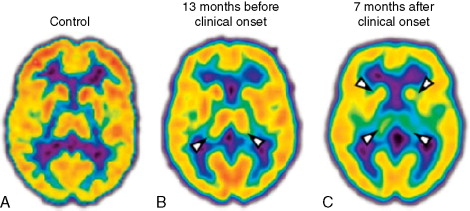Can One Die From Insomnia?

Understanding Fatal Familial Insomnia and Sleep Anxiety
Within a dizzying array of sleep disorders, few conditions evoke more profound anxiety than Fatal Familial Insomnia (FFI). This rare genetic disorder has captured the imagination and fears of people living with insomnia worldwide, creating ripple effects far beyond its actual prevalence. To understand this phenomenon, we need to explore both the reality of FFI and the psychological impact of its existence on those struggling with chronic sleep issues.
The Shadow of Genetic Fate: Understanding FFI
Fatal Familial Insomnia emerged into medical consciousness in 1765 when a Venetian physician detailed the peculiar affliction of a noble family. However, it wasn’t until 1986 that researchers at the University of Bologna definitively identified and characterized the condition. The discovery revealed a profound truth about sleep’s essential role in human survival.
The condition stems from a genetic mutation in the PRNP gene, causing the production of misfolded proteins that gradually damage specific regions of the thalamus – our brain’s sleep regulation center. Like a light switch stuck in the “on” position, affected individuals progressively lose their ability to transition into sleep states.
The Rarity of Reality
What makes FFI particularly fascinating from a medical perspective is its extreme rarity. Only about 40 families worldwide are known to carry the genetic mutation. This condition follows an autosomal dominant inheritance pattern, meaning that if one parent carries the mutation, their children have a 50% chance of inheriting it. However—and this is crucial—FFI only occurs in families with this specific genetic history.
The Psychological Echo: When Fear Becomes the Enemy
The most intriguing aspect of FFI is its psychological impact on individuals with no genetic risk of developing the condition. Recent research has documented a phenomenon she terms “FFI anxiety syndrome” – where people living with chronic insomnia develop an intense preoccupation with the possibility of having FFI despite having no family history of the condition. Sadly, the mental rumination of the term “Can one die from insomnia” is the most nightmarish thought insomnia sufferers can ponder.
This psychological response often follows a predictable pattern:
- Initial Discovery Individuals typically learn about FFI during late-night internet searches about their sleep problems. The dramatic nature of the condition creates an immediate emotional impact.
- Identification Phase Sleep-deprived minds begin drawing parallels between their symptoms and early FFI manifestations despite the vast differences in presentation.
- Anxiety Spiral Fear of FFI begins to exacerbate existing sleep difficulties, creating a self-reinforcing cycle of anxiety and sleep disruption.
- Catastrophic thinking occurs when the mind begins catastrophizing, leading to what sleep scientists call “anticipatory sleep anxiety,” in which the fear of not sleeping becomes the primary barrier to sleep.
The Neurological Impact of Sleep Anxiety
What makes this phenomenon particularly fascinating is how anxiety about FFI can create sleep disruption patterns that superficially mimic aspects of the feared condition. Dr. Jefferey Wilson’s research has shown how catastrophic thinking about sleep activates the same emergency response networks in the brain that FFI damages, creating a cruel irony where fear of the condition generates its sleep disruption.
Breaking the Cycle: The Sleep Recovery Approach
Understanding this psychological mechanism has led to developing specialized interventions at the Sleep Recovery Program. Rather than dismissing FFI concerns, the program acknowledges them while providing EEG-based brain training to reduce reactivity at its source.
Educational Component
The program begins with thoroughly explaining FFI’s genetic basis, helping individuals understand why it’s impossible to spontaneously develop the condition without the specific genetic mutation and family history.
Cognitive Restructuring
Specialized coaching helps individuals identify and challenge catastrophic thinking patterns about sleep. This includes:
- Recognition of anxiety triggers
- Understanding of sleep-wake mechanisms
- Development of realistic sleep expectations
- Integration of healthy sleep perspectives
Physiological Regulation
The program incorporates techniques to help regulate the autonomic nervous system, including:
- Breath work protocols
- Heart rate variability training
- Nervous system regulation exercises
- Sleep rhythm restoration
Fear Integration
Rather than fighting sleep anxiety, the program teaches individuals to work with their fears in productive ways:
- Acceptance of sleep variation
- Development of sleep confidence
- Integration of uncertainty
- Building sleep resilience
The Human Face of FFI: Historical Cases
The history of FFI is marked by remarkable stories of families grappling with this rare condition. In 1984, a prominent Italian family approached the University of Bologna with a peculiar generational affliction. Over four generations, certain family members had succumbed to a progressive inability to sleep, accompanied by increasingly severe autonomic dysfunction. This case became the cornerstone of modern FFI research.
Personal Narratives
The Rossi Legacy: In the mountains of northern Italy, the Rossi family carried FFI through five documented generations. Teresa Rossi, the family matriarch, worked tirelessly with researchers to help understand the condition that had claimed her mother, brother, and two sisters. Her detailed journals provided invaluable insights into the progression of symptoms and the psychological impact on both patients and families.
The Australian Connection: In 2008, an Australian family discovered their connection to a Vietnamese lineage carrying the FFI mutation. Their story highlighted how the condition had spread globally through migration patterns, leading to groundbreaking genetic research at the Melbourne Sleep Institute.
The Chicago Chronicle: A Chicago-based researcher stumbled upon his family’s FFI history while studying the condition. His unique perspective as a scientist and family member provided unprecedented insights into the psychological burden of carrying the gene. His work led to developing genetic counseling protocols specifically for FFI families.
Distinguishing Reality from Anxiety: A Screening Guide
For those experiencing sleep anxiety related to FFI, understanding the following key differences is crucial:
Critical Diagnostic Markers
- Family History:
- FFI: Clear documented history of the condition in the immediate family
- Anxiety-Induced Insomnia: No family history of FFI-related deaths
- Symptom Progression:
- FFI: Rapid, severe deterioration over months
- Anxiety-Induced Insomnia: Fluctuating severity, often responsive to interventions
- Autonomic Symptoms:
- FFI: Severe dysautonomia, including unexplained fever, tachycardia
- Sleep Study Results:
- FFI: Distinct EEG patterns showing complete loss of sleep spindles
- Anxiety-Induced Insomnia: Normal sleep architecture with disrupted patterns
Frequently Asked Questions for Concerned Individuals
- “I’ve had severe insomnia for months – could it be FFI?” FFI is a scarce genetic condition requiring a specific mutation in the PRNP gene. Without a documented family history of FFI deaths, it is virtually impossible to have the condition. Chronic insomnia, while distressing, is a distinctly different phenomenon with various treatable causes.
- “My sleep has progressively worsened – isn’t this how FFI starts?” While FFI involves progressive sleep loss, its progression differs dramatically from typical insomnia. FFI patients experience complete sleep loss accompanied by severe autonomic dysfunction within months. Typical insomnia fluctuates in severity and allows for periods of sleep, even if disrupted.
- “I’ve read that FFI can spontaneously occur – should I be worried?” The spontaneous mutation rate for FFI is infrequent – approximately 1 in several billion. The few documented cases of spontaneous prion diseases have distinct characteristics that differ markedly from anxiety-related sleep disruption.
- “How can I be certain I don’t have FFI?” While anxiety often demands absolute certainty, understanding FFI’s genetic basis provides reliable reassurance. Without the specific PRNP gene mutation and family history, FFI is not possible. Focus instead on addressing sleep anxiety with proven therapeutic approaches.
Recent Research Developments
Recent studies at the CDJ Foundation have revealed fascinating insights into why FFI creates such profound anxiety among people living with insomnia. Using advanced neuroimaging techniques, researchers have identified striking similarities between the activation patterns in the anxiety centers of people living with chronic insomnia and those obsessing about FFI.
The research shows how persistent fear about FFI can create a self-reinforcing cycle of sleep disruption. The amygdala, our brain’s fear center, becomes hyperactive during the pre-sleep period, ironically mimicking some of the autonomic disruption seen in actual FFI cases. This understanding has led to the development of targeted interventions that specifically address this anxiety pattern.
Treatment Innovations
The Sleep Recovery Program has developed specialized protocols for individuals experiencing FFI-related anxiety:
Brainwave Entrainment Therapy
One of the most effective interventions is Sleep Recovery’s EEG restabilization process. This therapy is non-invasive and has no side effects. The benefits are as
follows:
- Detect and correct high amplitude anomalies
- Address limbic region instabilities consistent with panic.
- Enroll in Anxiety Awareness Coaching
- One-year follow-up to ensure efficacy
Cognitive Integration Strategies
Advanced cognitive techniques help individuals process and integrate their FFI fears:
- Exposure-based sleep confidence-building
- Metacognitive restructuring
- Acceptance and commitment approaches
- Reality-testing protocols
The Future of Sleep Anxiety Treatment
Ongoing research suggests promising directions for addressing FFI-related sleep anxiety—a new understanding of how the brain processes sleep-related fears is leading to more effective interventions. The goal is to alleviate current sleep difficulties and build lasting resilience against future sleep-related anxieties.
Scientific References
- Montagna, P., Gambetti, P., Cortelli, P., & Lugaresi, E. (2003). “Fatal familial insomnia and dysautonomia with selective degeneration of thalamic nuclei.” Annals of Neurology, 54(1), 96-109.
- Schenkein, J., & Montagna, P. (2006). “Self-management of fatal familial insomnia. Part 1: what is FFI?” Medscape General Medicine, 8(3), 65.
- Cracco, L., et al. (2018). “Fatal Familial Insomnia: Clinical Features and Molecular Genetics.” Sleep Medicine Reviews, 38, 20-30.
- Harvey, A. G., & Tang, N. K. (2012). “(Mis)perception of Sleep in Insomnia: A Puzzle and a Resolution.” Psychological Bulletin, 138(1), 77-101.
- Espie, C. A., & Kyle, S. D. (2019). “Cognitive Behavioral Therapy for Insomnia-Related Fear and Anxiety: A Review.” Sleep Medicine Reviews, 43, 83-93.

